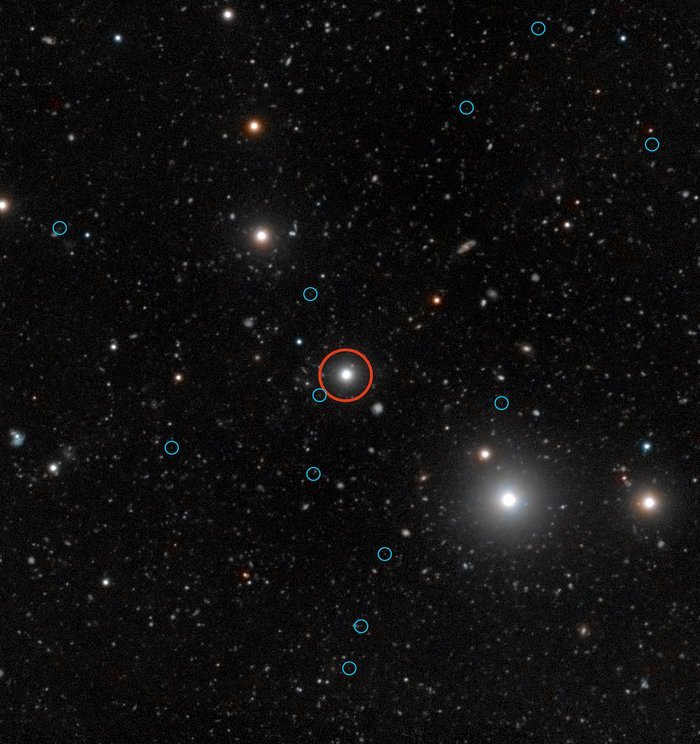Dark galaxies spotted for the first time (annotated)
This deep image shows the region of the sky around the quasar HE0109-3518. The quasar is labelled with a red circle near the centre of the image. The energetic radiation of the quasar makes dark galaxies glow, helping astronomers to understand the obscure early stages of galaxy formation. The faint images of the glow from 12 dark galaxies are labelled with blue circles. Dark galaxies are essentially devoid of stars, therefore they don’t emit any light that telescopes can catch. This makes them virtually impossible to observe unless they are illuminated by an external light source like a background quasar.
This image combines observations from the Very Large Telescope, tuned to detect the fluorescent emissions produced by the quasar illuminating the dark galaxies, with colour data from the Digitized Sky Survey 2.
ESO, Digitized Sky Survey 2 and S. Cantalupo (UCSC)
About the Image
| Id: | eso1228b |
| Type: | Observation |
| Release date: | 11 July 2012, 12:00 |
| Related releases: | eso1228 |
| Size: | 1600 x 1700 px |
About the Object
| Name: | HE 0109-3518 |
| Type: | Early Universe : Galaxy Early Universe : Galaxy : Activity : AGN : Quasar |
| Distance: | z=2.4 (redshift) |
| Constellation: | Sculptor |
| Category: | Quasars and Black Holes |
Wallpapers
Coordinates
| Position (RA): | 1 11 43.68 |
| Position (Dec): | -35° 3' 0.94" |
| Field of view: | 6.70 x 7.12 arcminutes |
| Orientation: | North is 0.1° left of vertical |
Colours & filters
| Band | Wavelength | Telescope |
|---|---|---|
| Optical B | Digitized Sky Survey 2 | |
| Optical R | Digitized Sky Survey 2 | |
| Infrared I | Digitized Sky Survey 2 | |
| Optical B | 414 nm | Very Large Telescope FORS2 |

